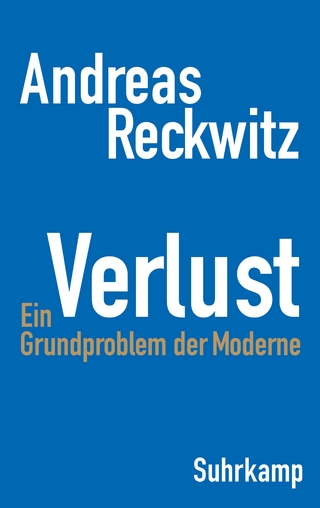
The Face Mask In COVID Times
De Gruyter (Verlag)
978-3-11-111665-5 (ISBN)
Deborah Lupton is SHARP Professor and the leader of the Vitalities Lab at the University of New South Wales (UNSW) Sydney. She is one of the most highly published and cited social researchers globally, with long-established expertise in the sociology of medicine, public health, the body, risk, and digital technologies. She is the co-author/author of 17 books as well as editor/co-editor of eight edited volumes. Lupton is renowned for her accessible writing style in introducing social and cultural theory: for example in her previous books Medicine as Culture (now in its third edition), Risk (now in its second edition) and Fat (now in its second edition). Marianne Clark is a Postdoctoral Research Fellow in the Vitalities Lab, Social Policy Research Centre and Centre for Social Research in Health, UNSW Sydney. Her work encompasses physical and digital cultures with an emphasis on women's and girls' embodied experiences of movement. Currently Marianne's work examines the affective dimensions of digital technology use and the ways embodied affects circulate in physical and digital spaces. She is the co-author of Feminist New Materialisms, Sport and Fitness: A Lively Entanglement (Palgrave Macmillan, forthcoming) and co-editor of The Evolving Feminine Ballet Body (University of Alberta Press). Clare Southerton is a Postdoctoral Research Fellow in the Vitalities Lab, Social Policy Research Centre and Centre for Social Research in Health, UNSW Sydney. Her published research has explored the intersections of social media, privacy, surveillance and sexuality. Her current research projects are focused on how intimacy and collective affects are cultivated on platforms and with devices, and potentials in these spaces for health and sexuality education. Her work has been published in New Media & Society, Social Media + Society and Girlhood Studies. Ash Watson is a Postdoctoral Research Fellow in the Vitalities Lab, Social Policy Research Centre and Centre for Social Research in Health, UNSW Sydney. A former doctoral Endeavour Research Fellow, she now works on an Australian Research Council funded project exploring how people make sense of/with personal data-generating technologies. She is an internationally recognised leader in creative public sociology for her work with fiction and zines. Her debut novel Into the Sea was published in 2020. Her scholarly work has appeared in Cultural Sociology, Qualitative Research and the American Journal of Cultural Sociology.
Chapter 1: Introduction: The Face Mask as Sociomaterial Artefact
This chapter will introduce the rationale for the book, addressing the question of why sociomaterial theories are so important to make sense of the meanings and practices related to the face mask in the age of COVID. It will provide the context for understanding the face mask as a sociocultural artefact, discussing the history of the face mask (and other facial coverings, such as veiling practices) internationally. This chapter also provides an overview of the theoretical perspectives we are using in our analysis. We draw particularly on the vital materialism offered in the work of feminist new materialist scholars and Indigenous and First Nations philosophies as well as domestication theory. These perspectives position material objects such as face masks as contributing to assemblages of people with nonhuman things. It is with and through these combinations of humans and nonhumans that agencies and forces are generated. We 'think with' vital materialism in the following chapters to consider how the face mask has taken on the extraordinary meanings, values and affective intensities. This chapter, therefore, provides the basis for elucidating the divergent cultural responses to face masks in contemporary political and geographical contexts that follows in the book.
Chapter 2: The Micro and Macro Politics of Masks
This chapter will trace the anti-mask and #masks4all movements during the COVID crisis, examining the meanings both groups attached to the mask. We interrogate the process by which masks came to be regarded as a necessity in many countries that had previously been apathetic to mask-wearing as a public health strategy, and how this played out at the level of everyday practices. We interrogate how masks came to be a key site of contestation during the pandemic and a significant symbol of the event. Focusing on several high-profile case studies involving public conflicts around masks, this chapter employs Karen Barad's concept of intra-action to examine the discourses, objects, bodies, habits, relations of power and affects that intra-act to constitute the divergent meanings of masks that came about during the early months of the pandemic. This chapter draws connections between the micro-level everyday anxieties surrounding mask-wearing in shops to public health messaging at the national level to international tensions surrounding their manufacture and purchase.
Chapter 3: Ordinary Objects, Extraordinary Times
This chapter explores the way face masks and their (contested) emergence during the pandemic offer us an opportunity to think about our intimacy with ordinary objects. Though intimacy is often conceptualised as emerging in inter-personal relationships, taking up a vital materialist perspective we consider the way it emerges in the relations between humans and nonhuman objects, such as the face mask. Drawing on scholarship from science and technology studies, we contextualise face masks within a history of intimate objects that have become 'domesticated', such as glasses and clothing, and, more recently, smartphones and smart watches. In tracing this domestication, this chapter examines establishing of everyday routines and habits, as well as attempts to normalise masks through public health messaging. This chapter will explore the way this intimacy is connected to some initial discomfort with widespread mask wearing during the pandemic.
Chapter 4: Bodies, Breath, Boundaries
This chapter examines the embodied and affective aspects of wearing a mask and considers how these experiences shift in relation to the sociomaterial contexts and conditions in which they are worn. By attending to the entangled materialities of objects, breath and bodies, this chapter will explore the indeterminacy of bodily boundaries in order to illuminate the often-overlooked leakiness of social life and underline its collective dimensions. Drawing on Karen Barad's concepts of entanglement and intra-action and Stacy Alaimo's transcorporeality, we extend understandings of bodies as bounded entities and trace their interconnectedness. We then consider how this interconnectedness matters specifically in pandemic times. Paying attention to the specificities of face masks and the embodied practice of mask wearing, we trace the affective and material flows that move across bodies and environments.
Chapter 5: DIY Cultures and the Making of Masks
Face masks have quickly emerged as a fashion accessory and key selling point for many retailers, from luxury companies including Louis Vuitton to boutique crafters via platforms such as Etsy. However, due to production delays, issue of cost and accessibility, and limited supplies of available Personal Protective Equipment being necessarily directed to frontline service workers, a notable do-it-yourself (DIY) culture of mask making has emerged. This chapter explores the relational politics and distributed agencies of DIY face masks. With several case studies on the creative exchange of accessible tools and techniques and grassroots social justice supply campaigns, it considers the significance of how face masks are made to matter in the COVID context. This chapter positions these making practices within the broader landscape of contemporary DIY cultures, focusing on the ways in which the profit-resistant, creativity- and community-oriented aesthetic and political ethos of DIY shapes the meaning, materiality and multiplicity of the mask.
Chapter 6: Face Masking as An Act of Care
As masks and the practices associated with them (wearing, refusing, creating) were positioned at the centre of the COVID crisis in many countries, we consider the ways that mask-wearers and makers emphasise the act of wearing the mask as an act care for others, as well as self-protection. At the same time, those who refuse masks are positioned in opposition, as careless - or potentially hostile to others. We engage the work of Maria Puig de la Bellacasa to think how masks and mask wearing and creation become implicated in the ethical, political and material dimensions of care. Locating ourselves in the rapidly shifting and emerging conditions of the COVID pandemic, masks become central to our ethical and careful responses. Here we consider the way that care and being careful extends towards the minute level of one's breath.
Epilogue
Here we offer some concluding comments, reflecting on the themes that thread together the chapters in the book.
| Erscheinungsdatum | 20.11.2022 |
|---|---|
| Zusatzinfo | 17 col. ill. |
| Verlagsort | Berlin/Boston |
| Sprache | englisch |
| Maße | 155 x 230 mm |
| Gewicht | 337 g |
| Themenwelt | Sozialwissenschaften ► Soziologie |
| Schlagworte | Anti-mask activism • Covid-19 • face mask • Maskengegner • Mundschutz • Mund-Und-Nasenschutz • Pandemic • Sociology Of COVID • Soziologie |
| ISBN-10 | 3-11-111665-4 / 3111116654 |
| ISBN-13 | 978-3-11-111665-5 / 9783111116655 |
| Zustand | Neuware |
| Informationen gemäß Produktsicherheitsverordnung (GPSR) | |
| Haben Sie eine Frage zum Produkt? |
aus dem Bereich


